THE DRIVERS, PART XV.
 Sunday, November 27, 2022 at 08:53AM
Sunday, November 27, 2022 at 08:53AM By Peter M. DeLorenzo
Detroit. Ask anyone who has been involved in racing what they remember most about the sport - besides the memorable cars and races - and they will always talk about the people and the personalities involved. It's these stories that fuel the memories, because racing is far from a one-dimensional pursuit. It's a passionate endeavor that consumes the people involved to a degree that outsiders just can't understand. And it's these memorable characters who have left an indelible mark on the sport. Drivers who were fierce competitors, flawed heroes and incredible, gifted talents. Their legacies are what make the sport of motor racing so fascinating. In the previous issues, I have recalled some - but not all - of my favorites (scroll down to "next 1 entries" to read previous issues -WG), and there are clearly many more exceptional drivers to cover. If you follow me on Twitter (@PeterMDeLorenzo) and read this column, you know that I've been posting images and commentary covering a lot of the compelling historical stories from racing's golden years. This week I'm focusing on the incomparable Dan Gurney.
We all knew that day was coming, the great Daniel Sexton Gurney was getting up in years and the inevitability of life's end was near. But that didn't make his passing easier or any less heartbreaking. As a country we've been blessed with many talented racers, but Dan was always different (and full disclosure, he was my all-time favorite). And even though he grew up in Long Island and didn't move to California until he graduated from high school, Dan will always be the lanky Californian with the blonde hair who burst on the racing scene and in short order was going up against the world's best on tracks all over Europe.
Dan's accomplishments in racing are many. His driving career spanned fifteen years, from 1955 to 1970. His talent was prodigious and his reputation grew with each race he competed in. Dan became one of America's top road racing stars as well as one of the most popular F1 drivers of his era. Gurney raced for Ferrari, BRM, Porsche (giving the German manufacturer its only win as an F1 constructor), Brabham and later his own All American Racers Eagle team. By the time Dan retired from active driving in 1970 he had raced in 312 events in 20 countries with 51 different makes (more than 100 different models) of cars winning 51 races, 42 pole positions and achieving 47 podiums. And the measure of respect that his competitors reserved for him was well-documented, including the great Jim Clark who considered Dan to be his most talented rival.
Dan won in Formula 1, NASCAR (five 500-mile races at Riverside), and recorded two second-place finishes in the Indianapolis 500. And Dan was single-handedly responsible for bringing Colin Chapman and the Ford Motor Company together for a run at the Indy 500. He won in Trans-Am, Can-Am and sports car races, including at the Nuerburgring, Daytona, Sebring and his famous victory at the 1967 24 Hours of Le Mans in a Ford Mk IV with A.J. Foyt. Gurney was the first driver to post victories in the four major motorsports categories: Grand Prix, Indy Car, NASCAR and Sports Cars. To this day he is one of only three drivers in history (the others being Mario Andretti and Juan Pablo Montoya) who have accomplished that.
But one victory stands above all the others for Dan Gurney. His win in the 1967 Grand Prix of Belgium in his Eagle Gurney-Weslake V12 remains the first and only time that an American citizen built and raced a car of his own construction and put it into the winner’s circle of a World Championship F1 race.
Dan embarked on a second and third career as a race car manufacturer of the Eagles as well as team owner of AAR started while he was still actively driving, and it went into full gear upon his retirement in 1970. At that time he bought out AAR co-founder Carroll Shelby and was the sole owner, chairman and CEO of the company ever since. AAR has been designing and manufacturing race cars with great success during the last 30 years, winning eight Championships and capturing 78 victories and 83 pole positions, including the Indy 500 twice (Bobby Unser in 1968 and Gordon Johncock in 1973), the 12 hours of Sebring and the Daytona 24 Hour.
You can get the complete scope of Dan's racing career at www.allamericanracers.com.
Supremely gifted behind the wheel, Dan Gurney was also a technical visionary whose influence will live on in the sport of motor racing forever.
But beyond that, he was truly an extraordinary man who is still deeply missed.
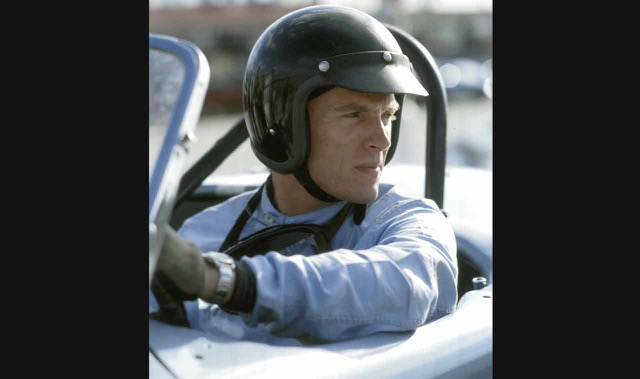 (Photo by Dave Friedman)
(Photo by Dave Friedman)
Dan Gurney, All-American Racer.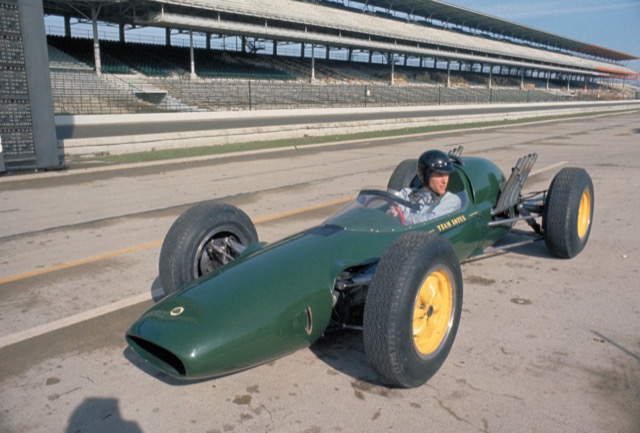
(Photo by Dave Friedman)
Indianapolis Motor Speedway, 1963. Dan Gurney in the brand-new Lotus-Ford Indy car in its first private test.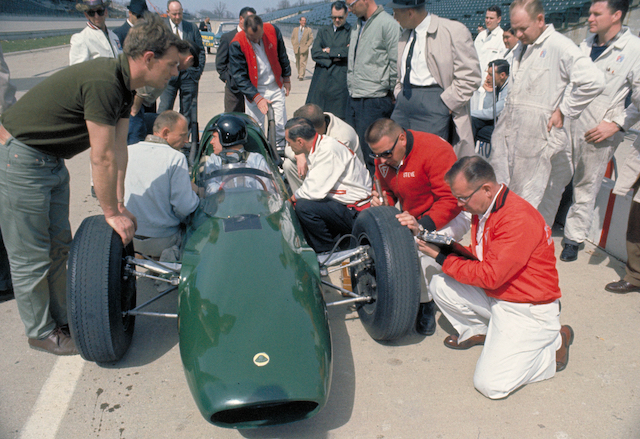
(Photo by Dave Friedman)
Indianapolis Motor Speedway, 1963. Lotus team members, Ford operatives and Firestone tire engineers crowd around Dan Gurney and the Lotus-Ford at the first private test for the new machine. Gurney was instrumental in bringing Colin Chapman and the Ford Motor Company together for an attempt at winning the Indianapolis 500.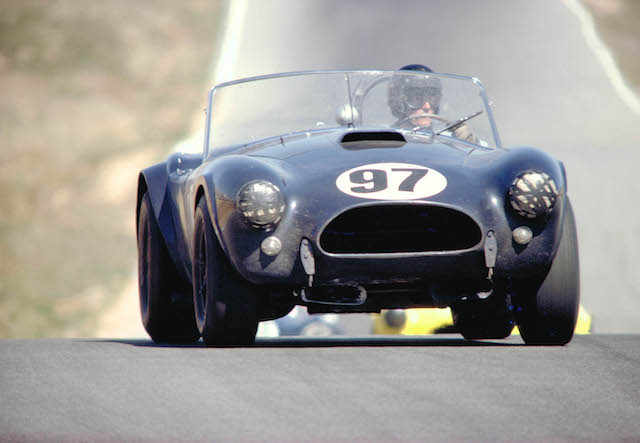
(Photo by Dave Friedman)
Riverside International Raceway, October 13, 1963. Dan was part of the Shelby American Cobra team for a special one-hour GT race. Bob Bondurant (No. 99 Shelby American Cobra) won, followed by Allen Grant (No. 96 Coventry Motors Shelby Cobra), Lew Spencer (No. 98 Shelby American Cobra) and Gurney (No. 97 Shelby American Cobra). Gurney delivered many great moments and wins for Carroll Shelby.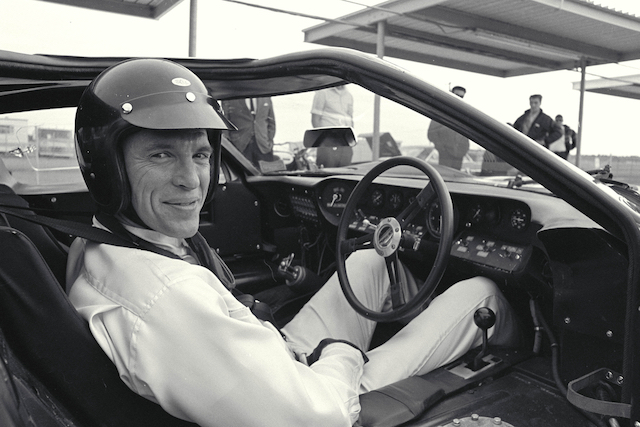
(Photo by Dave Friedman)
Daytona International Speedway, 1966. Dan sits in his factory Shelby American Ford Mk II 427 during practice for the Daytona 24 Hour race.
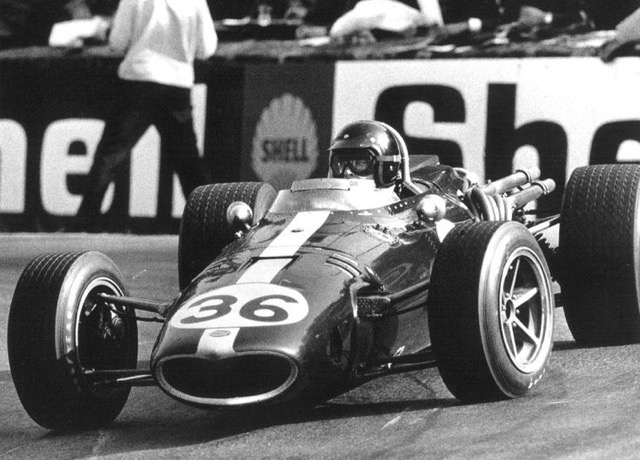
(Getty images)
Spa-Francorchamps, June 18, 1967. Dan Gurney on the way to his greatest victory in the Grand Prix of Belgium. It came just ten days after he won the 24 Hours of Le Mans with A. J. Foyt.

(Photo by Dave Friedman)
Ed Leslie, Parnelli Jones and Dan Gurney at the press intro for the factory 1967 Mercury Cougar Racing Team. The cars were prepared and entered by Bud Moore Engineering.

(Getty images)
Jim Hall and Dan Gurney, 1966.

(Getty images)
Jim Clark considered Dan Gurney to be his greatest rival.

(Getty images)
1962 French Grand Prix, Rouen-Les-Essarts circuit, July 8, 1962. Dan Gurney (No. 30 Porsche System Engineering Porsche 804) recorded his first Grand Prix win and delivered Porsche's first - and only - win as a F1 constructor.

(Getty images)
Another shot of Dan Gurney winning at Spa in 1967. The No. 36 AAR T1G Eagle-Weslake V12 remains my all-time favorite Grand Prix car.

(Photo by Dave Friedman)
Dan next to his factory Shelby American Cobra before the 1-hour GT race at Riverside, October 13, 1963.

(Photo by Dave Friedman)
Laguna Seca, October 18, 1964. Dan Gurney (No. 19 Lotus 19 B Ford) leads Roger Penske (No. 66 Chaparral 2A Chevrolet) and Parnelli Jones (No. 98 Shelby American Cooper King Cobra Ford) during the 200-mile Monterey Grand Prix. Penske won both heats, and Gurney and Bob Bondurant (No. 96 Shelby American Cooper King Cobra Ford) finished second and third in both heats. Parnelli didn't finish that day.

(Getty images)
Bridgehampton Can-Am, September 18, 1966. Dan Gurney (No. 30 All American Racers Lola T70 Mk.2 Ford-Weslake V8) won the Can-Am ahead of Chris Amon (No. 5 McLaren Elva Mark II Chevrolet) and Bruce McLaren (No. 4 McLaren Elva Mark II B Chevrolet). Gurney's AAR Lola was one of the most beautiful sports racing cars ever built.

(Getty images)
Goodwood Motor Circuit, September 5, 1959. Dan Gurney on it hard in his No. 9 Ferrari 250 TR 59; he finished fifth overall in the R.A.C. Tourist Trophy with co-driver Tony Brooks. A classic '50s sports car racing image.

Indianapolis Motor Speedway, May 1966. Dan Gurney introduced his beautiful No. 31 All American Racers Eagle-Ford at The Speedway for the 1966 Indy 500. Dan was one of sixteen drivers eliminated in a massive crash at the start of the race.

(Getty images)
When Bruce McLaren was tragically killed in a testing accident at the Goodwood Circuit on June 2, 1970, the team was faced with a decision: Stop everything, or go on. Since the Can-Am season opener was two weeks away at Mosport, they decided to go on and asked Dan Gurney - a longtime friend of Bruce McLaren and the team - to step into the McLaren M8D Chevrolet as a teammate to Denny Hulme. Dan promptly put his No. 48 Gulf/Reynolds Aluminum McLaren M8D Chevrolet on the pole - the team used Gurney's favored No. 48 instead of Bruce's No. 4 - and won the race. Two weeks later, at the Mont-Tremblant Can-Am in St. Jovite, Gurney put his No. 48 McLaren M8D Chevrolet on pole again, and won the race. Beyond winning, Gurney pulled the team together emotionally and fortified the team to press on.

(Photo by Dave Friedman)
Le Mans, France, June 11, 1967. With A.J. Foyt looking on, Dan Gurney is about to pop the champagne and spontaneously spray everyone near the victory stand with it after the duo won the 24 Hours of Le Mans driving their No. 1 Shelby American Ford Mk IV. (The act has been repeated countless times since, but Dan was the first to do it.) Gurney and Foyt were openly derided by the international motoring press before the race. The assembled media were convinced that Foyt wasn't up to the task and that the two of them wouldn't be a factor in the race, because they just didn't have the discipline to compete over the 24 hours. But Gurney devised a brilliant race strategy that focused on running fast with the emphasis on finishing the race, and Foyt adhered to the strategy to the letter. The No. 1 machine took over the lead of the race by the second hour and Gurney/Foyt went on to win by four laps over the No. 21 Ferrari 330 P4 driven by Ludovico Scarfiotti/Mike Parkes. The No. 24 Ferrari 330 P4 driven by Willy Mairesse/Jean Blaton finished third. Gurney and Foyt not only proved the "experts" wrong, they delivered what remains to this day the only win in the 24 Hours of Le Mans by an American team, with an American-built car and with American drivers at the wheel. A truly momentous day.

(Photo by Dave Friedman)
Colin Chapman takes notes and Jim Clark listens intently as Dan Gurney describes what the new Lotus-Ford Indy car feels like during its first test at the Indianapolis Motor Speedway in 1963.
 (Getty images)
(Getty images)
It's safe to say that Dan Gurney is one of the iconic figures in the history of motorsport. His contributions to racing in terms of driving, car building and team leadership remain legendary to this day. It's also safe to say that there will never be another quite like him.
Editor's Note: You can access previous issues of AE by clicking on "Next 1 Entries" below. - WG




